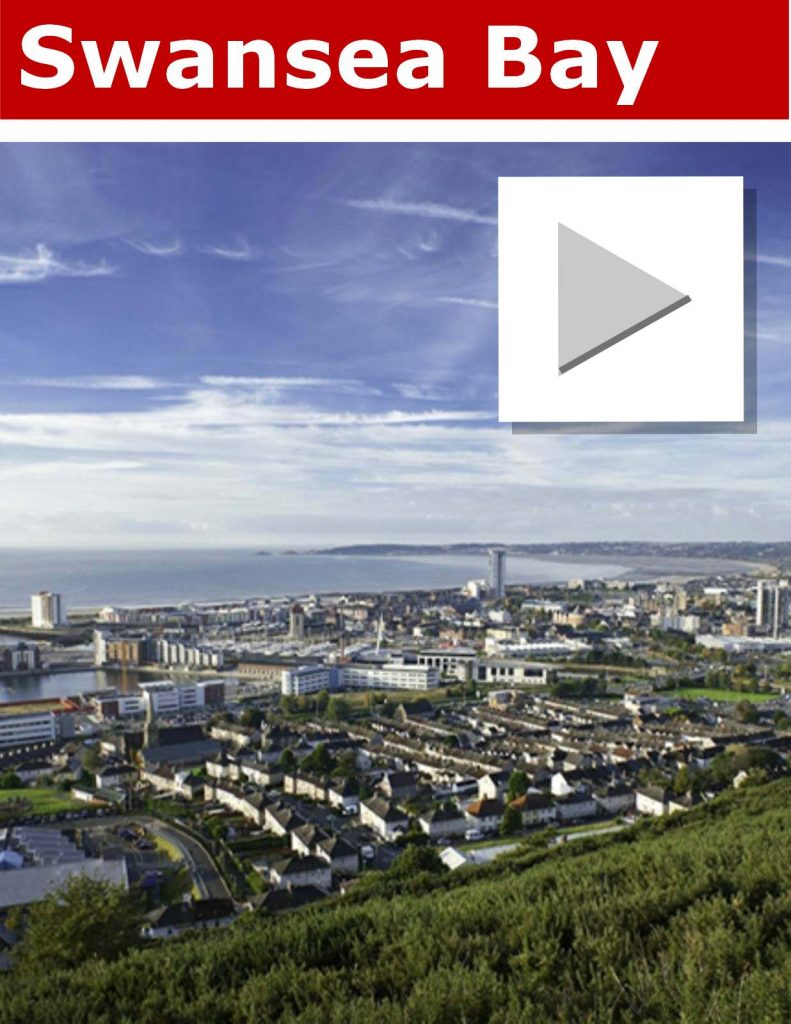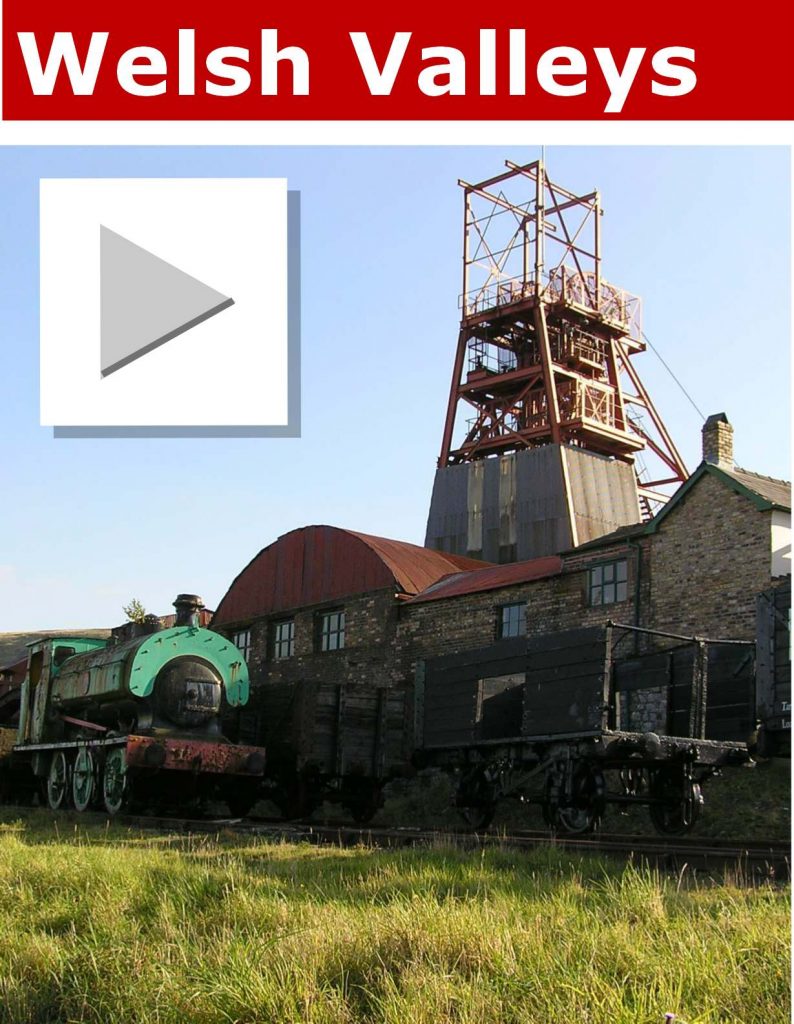
The Lower Swansea Valley: cradle of the Industrial Revolution
The history written about the Industrial Revolution has been a very English affair. In most of the well-known textbooks Wales get barely a look-in. The scene of the action is nearly always located in England. In the self-styled ‘birthplace of industry’ at Ironbridge Gorge and nearby Coalbrookdale; in the ‘dark satanic’ cotton mills of Lancashire; and in the shipyards and factories of Tyneside.https://www.visitswanseabay.com
As in so much historical work on ‘Britain’, the perspectives offered are usually Anglo-centric, and examples or evidence from Wales are usually conspicuous by their absence. As a result, there is little in the literature to help sustain any claims that Wales might have been the world’s first industrial nation. And we are left with a very powerful myth which suggests that the driving forces of the all-transforming processes of industrialisation were located in England.
1750 and all that
Of course, Welsh history has more than a few myths of its own, and one of the most enduring ones is that in Wales the coming of the Industrial Revolution was all about iron and Merthyr. Indeed, during an otherwise excellent BBC Wales television series on the history of Welsh towns, the rugby commentator Eddie Butler recently told us that: “The industrial revolution in Wales began in 1750 with the ironworks at Merthyr Tydfil.”http://www.welovemerthyr.co.uk/public/visiting
Began in 1750? With all due respect, this is nonsense! Industrialisation did not begin with a big bang, and it certainly did not begin in Merthyr. Such Mertho-centric views of the world completely ignore the vitally important contributions made by other places to modern Welsh industrialisation in earlier years. They ignore the Redbrook in the Wye Valley. They ignore Neath Abbey and Aberdulais in the Neath Valley. And, as usual, they ignore north-east Wales, and especially Bersham and the Greenfield Valley.http://www.visitnpt.co.uk
But above all such views they ignore the Lower Swansea Valley where industrial activity of world significance was already in full swing well before a single furnace went into blast at Dowlais or Cyfarthfa.
This is not to deny the undoubted importance of Merthyr in Welsh history. Indeed, later in this series my colleague Chris Evans makes a compelling and passionate case in support of that unique iron town. And in his marvellous book on work and social conflict in early industrial Merthyr, Professor Evans notes that, rightly or wrongly, Merthyr now has powerful ‘totemic value’ in Welsh history because of what it symbolises for working-class traditions and politics.
But if we look beyond the emergence of radical politics, and then extend that view to the period before iron and coal came to dominate Welsh industrialisation in the 19th century, the reality is it was the copper industry that led the way. Propelling Welsh copper onto the world stage was a unique combination of natural resource, capital, labour, and entrepreneurial vision that came together in the Lower Swansea Valley during the first half of the 18th century.
It was the copper industry that first effectively harnessed coal technology to facilitate mass production of a high-quality metal. It was copper that led the breakout of Welsh heavy industry into world markets. It was the copper kings who created the first purpose-built workers’ accommodation and townships in Britain. And it was the copper industry that created in Swansea the ‘intelligent town’ shaped by science, art, culture, and an insatiable thirst for all forms of new practical knowledge.
Next page: A place in Welsh history
A place in Welsh history
Why the Lower Swansea Valley? There were of course no deposits of copper ore in the valley. But the valley possessed two critically important natural assets that acted as a magnet for the early industrialists. The sides of the valley possessed rich outcrops of easily accessible coal, while on its floor the wide river provided plenty of water and the necessary short transport link to the sea. This convinced some visionaries that it made much more financial sense to bring copper ore to the valley than it did to carry large quantities of coal to the source of that ore in the mines of Cornwall and Ireland.
As expansionist copper producers outgrew sites elsewhere in South Wales, such as Redbrook in the Wye Valley, they turned their attention to Swansea as well as the Neath area, where there was already a long tradition of smelting and metal production. Leading the way were merchants from Bristol, and the first hesitant steps were taken in the Lower Swansea Valley when smelting houses were built at what became the Llangyfelach works at Landore in 1717. Ten years later, this works was taken on and developed by other incomers – Robert Morris from Shropshire and the influential London merchant Richard Lockwood.
Others from Bristol and London soon jumped on the bandwagon. The large White Rock works was established in the shadow of Kilvey Hill in 1737. Chauncey Townsend’s lead works at Middle and Upper Bank became copper works during the 1760s and 1770s, before Matthew Boulton and his Midland partners developed the Birmingham or Ynys works from 1793 onwards. The Hafod works was built by the Cornishman John Henry Vivian in 1808-09, and this was followed by the Morfa works of Williams, Foster & Co. In total, 13 copper works were established by 1850.
A world-leading method of smelting soon emerged, and an array of furnaces facilitated the production of semi-refined cake as well as bars, ingots, and plates. The ‘Welsh method’ involved multiple roastings in a long line of reverbatory furnaces, and it held sway for a century and a half after 1720.
The smelting houses were fuelled by the high-quality smokeless steam coal that was first extracted from exposed seams on Kilvey Hill, and then later from numerous pits sunk at Landore, Plasmarl, Treboeth, Cwm, Winch Wen, and Llansamlet. And, adding to the diversity, there were later spin-off industries, notably (and most dangerously) arsenic and sulphuric acid.
These interlinked industrial concerns were serviced by a transport system that was remarkable by any standards. Of course, the River Tawe remained of great importance and it soon became lined with docks, quays, and wharves. But it was ambitiously constructed man-made transport infrastructure that enabled the valley to function so effectively.
John Smith’s canal was completed in 1784 to carry coal three miles from Llansamlet to Foxhole, and a few years later Morris’ Canal (later Trewyddfa Canal) connected Morriston to the river near Plasmarl.
Then, on a much grander scale, the Swansea canal was built on the western side of the valley between 1794 and 1798. It ran for more than 16 miles between Abercrave and Swansea, and enabled coal to be carried to the smelting works as well as the nearby port. Some of the surviving structures, such as the aqueduct at Clydach, are of the greatest importance, and we are all deeply indebted to the Swansea Canal Society which in recent years has fought tooth and nail to protect and restore the northern stretch of the canal.
Smith’s canal contained a short underground section from which coal was fed into the White Rock works. In other parts of the valley canals were constructed to carry coal along routes beneath mountains. Most notable here was the Clyn-du underground mining canal, which was served by underground railways, and probably built by Lockwood, Morris & Co. It was constructed during the 1770s beneath Graig Trewyddfa at Morriston, and has claims to have been the world’s longest canal of its type.
Coal roads, tramways and railways also made an early and important contribution to the development of the valley. Over two centuries, these functional systems were constantly upgraded and renewed, and in places such as Landore there emerged dense concentrations of interlocking transport networks.
From 1850 onward the great Landore viaduct designed by Isambard Kingdom Brunel carried the mainline railway above the valley floor and river into Swansea. It still serves its purpose today, a great reminder of the many extraordinary feats of engineering, skill and vision that transformed the valley into a hotbed of industrial activity.
Other achievements put the valley at the forefront of innovation, and add to an already long list of ‘world firsts’. The workers’ accommodation known as Morris Castle, built on a promontory overlooking the valley by Robert Morris II in the 1770s, was the first such multi-storey building in Britain since Roman times. The planned township known as Tre-Vivian, or Vivian’s Town, built by the Vivian family from the 1820s onwards, was the first of its type. Others followed: Morris Town (Morriston), Grenfell Town (Pentre-Chwyth), and the settlement built by Freeman & Co at Foxhole. Each settlement had its own schools, churches and chapel, and this gave rise to the development of cohesive communities, each with its own distinctive identity.
Of course, living conditions in the valley were blighted to a very considerable degree by sulphurous fumes and the growth of giant slag heaps. And there were strikes and disputes from time to time. But by and large the social and cultural systems built up around the smelting works were sufficiently effective to ensure avoidance of the violent confrontations between owners and workers that occurred elsewhere in Wales.
Essentially places such as Merthyr and Coalbrookdale were always one-industry towns. But, over time, the industrial complex that emerged within a few square miles on the narrow floor of the valley between Llansamlet in the north and Foxhole in the south came to support the production of copper, gold, iron, lead, silver, steel, tinplate, zinc and various alloys such as brass and spelter.
Indeed, the name ‘Copperopolis’ does scant justice to the range of industrial activity conducted in Swansea and its immediate valley hinterland.
A survey indicates that in 1883 there were 53 works of various types within a five-mile radius of the centre of Swansea, and most of these were in the lower part of the valley. There were 36 collieries, eight ironworks, six tinworks, three steelworks, six spelterworks, 12 copperworks, five fuelworks, and 13 other types of works. It is hard to think of any other place of such small size in Britain that contained a similar density and diversity of heavy industry. There was certainly nowhere else like it in Wales.
Today there are few visible physical reminders of the scope and the scale of that activity.
There are no places to visit, trails to follow, or information boards to read, and in large part this helps to explain why the Lower Swansea Valley has been almost entirely erased from our historical consciousness. Indeed, were it not for Stephen Hughes’ wonderful book Copperopolis the details of what happened in the Lower Swansea Valley would have been airbrushed out of Welsh history.
Next page: The world of the Lower Swansea Valley
The world of the Lower Swansea Valley
For any place to have a credible claim to be the most important place in Welsh history it is necessary for it to have had an impact beyond Wales. Its significance must be recognised from afar as well as close to home. An enduring legacy in other parts of the world only adds to the strength of any claims made on its behalf. The Lower Swansea Valley has certainly left a deep imprint on global history.
From the very beginning the growth of the copper concerns in the Lower Swansea Valley was driven by demand from international markets, and this placed them at the forefront of the processes that were shaping the emergence of a world economy. There is no escaping the fact that early interest in the valley arose from a need for Bristol merchants to manufacture the decorative copper items that were used as currency in the transatlantic slave trade. Compelling evidence for this is provided by the activities of those such as the Coster family, who were involved in the early development of the White Rock works.
But the early copper industry was always about much more than slavery (and it is noteworthy that Swansea later led the way in Wales’ abolition movement). An important factor in the development of Lockwood, Morris & Co was the securing of an annual order to supply the East India Company which shipped increasing amounts of copper to Asia from 1730 onwards. The second wave of firms to establish works in the valley between 1750 and 1790 all supplied copper to the East India Company, and the combined impact of their operations was very considerable indeed. The previously favoured Japanese copper was rapidly swept from Indian and Indian Ocean markets, so much so that Swansea copper soon dominated.
A very effective export strategy began the process of yoking Asian economies to British industry. Later, during the 1830s and 1840s, the full force of imperial-industrial capitalism was to be felt in India when traditional indigenous textile industries were almost obliterated by cheap, machine-produced Lancashire cottons. But it was the smelters of the Lower Swansea Valley who paved the way for the successful penetration of Asian markets by British products.
This development was of seismic significance but has never been properly acknowledged by historians of Britain, let alone historians of Wales. It is, however, recognised in Asia, where some scholars are well aware of the importance of Swansea for global economic development. As Ryuto Shimada has written recently, “it was British copper, not British cotton textiles, which acted as the harbinger of the Industrial Revolution to the world economy”. As Shimada notes, nearly all of the British copper that flooded into Asian markets after 1750 was smelted in the Lower Swansea Valley.
But the copper industry served to integrate the global economy in other ways. Indeed, one of the most astonishing aspects of the history of the Lower Swansea Valley is how its entrepreneurs scoured the world after 1820 as they went in search of new supplies of copper ore. This was necessary because the mines of Cornwall, Anglesey and Ireland became exhausted.
It meant that the smelters now derived their ore from far-flung places, not just in Europe, but in North and South America and the Antipodes. As mines in Cuba, Chile and South Australia were connected with works in Hafod, Landore and Morfa, the Lower Swansea Valley exerted a powerful influence on emerging economies across different parts of the world.
So, this essay makes the case for the Lower Swansea Valley being the cradle of the Industrial Revolution. But which industrial revolution have we been talking about? Wales’ industrial revolution? Certainly. Britain’s industrial revolution? Definitely. The global industrial revolution? Without a doubt.
In sum, the activities centred on the Lower Swansea Valley served to animate the complex industrial processes that transformed the world during the 18th and 19th centuries. We are still living with the consequences today, and that is why the valley fully deserves to be regarded as the most important place in Welsh history.




